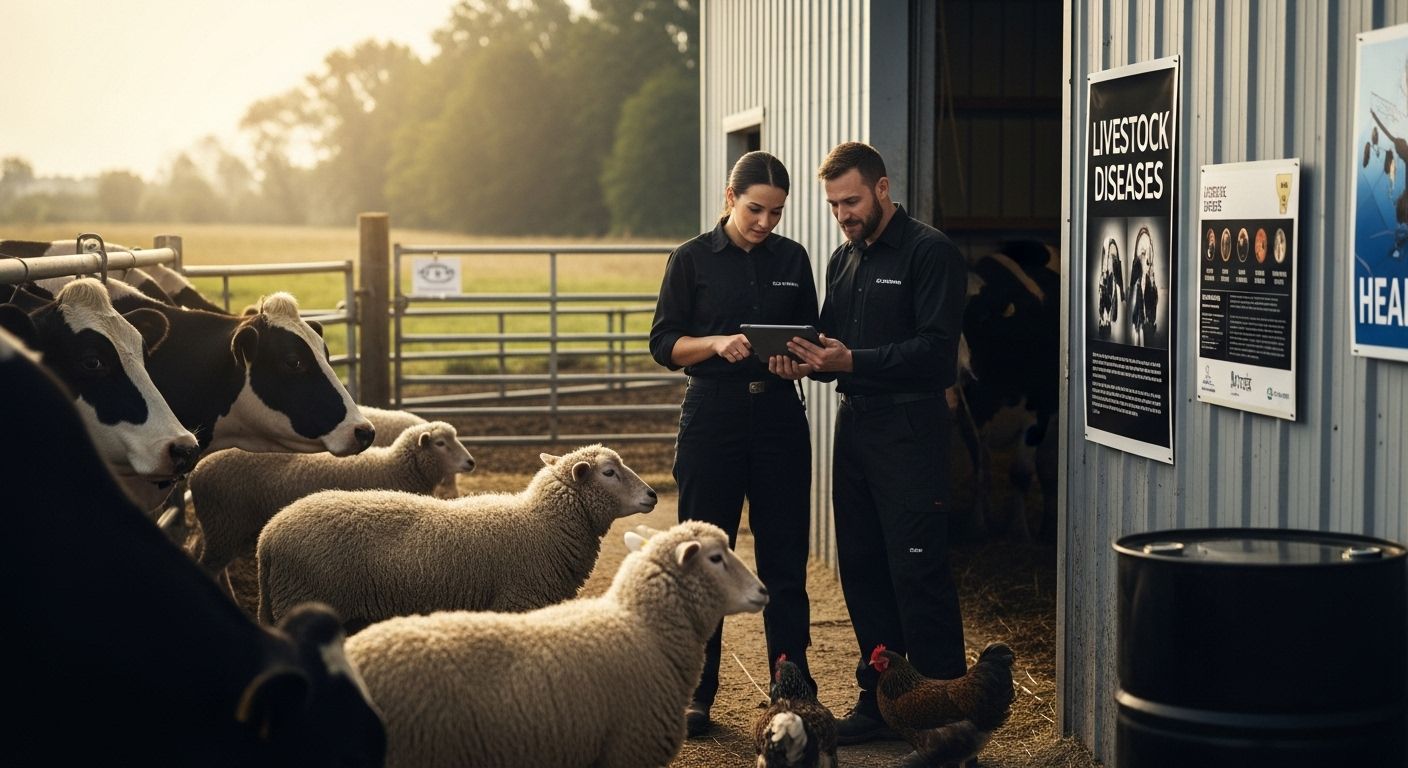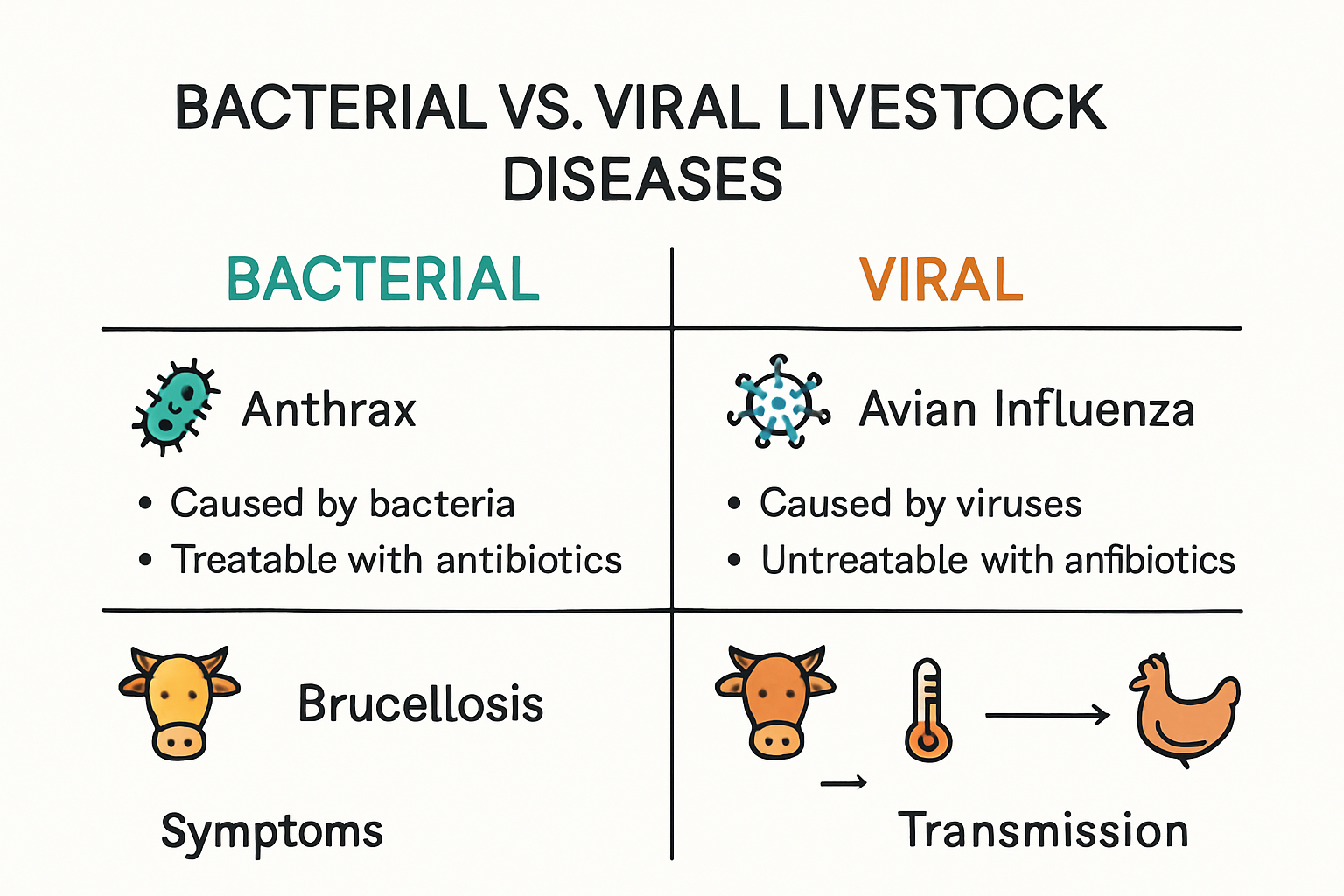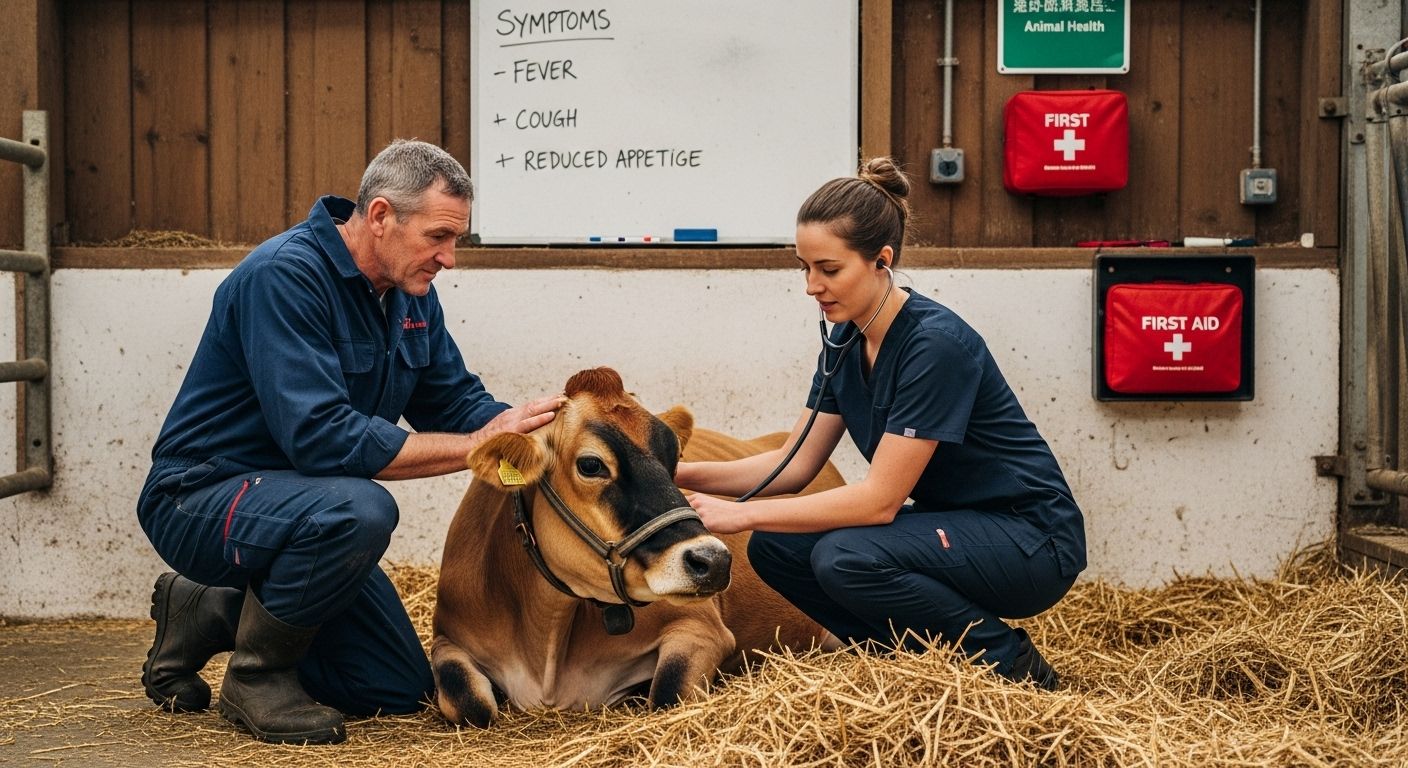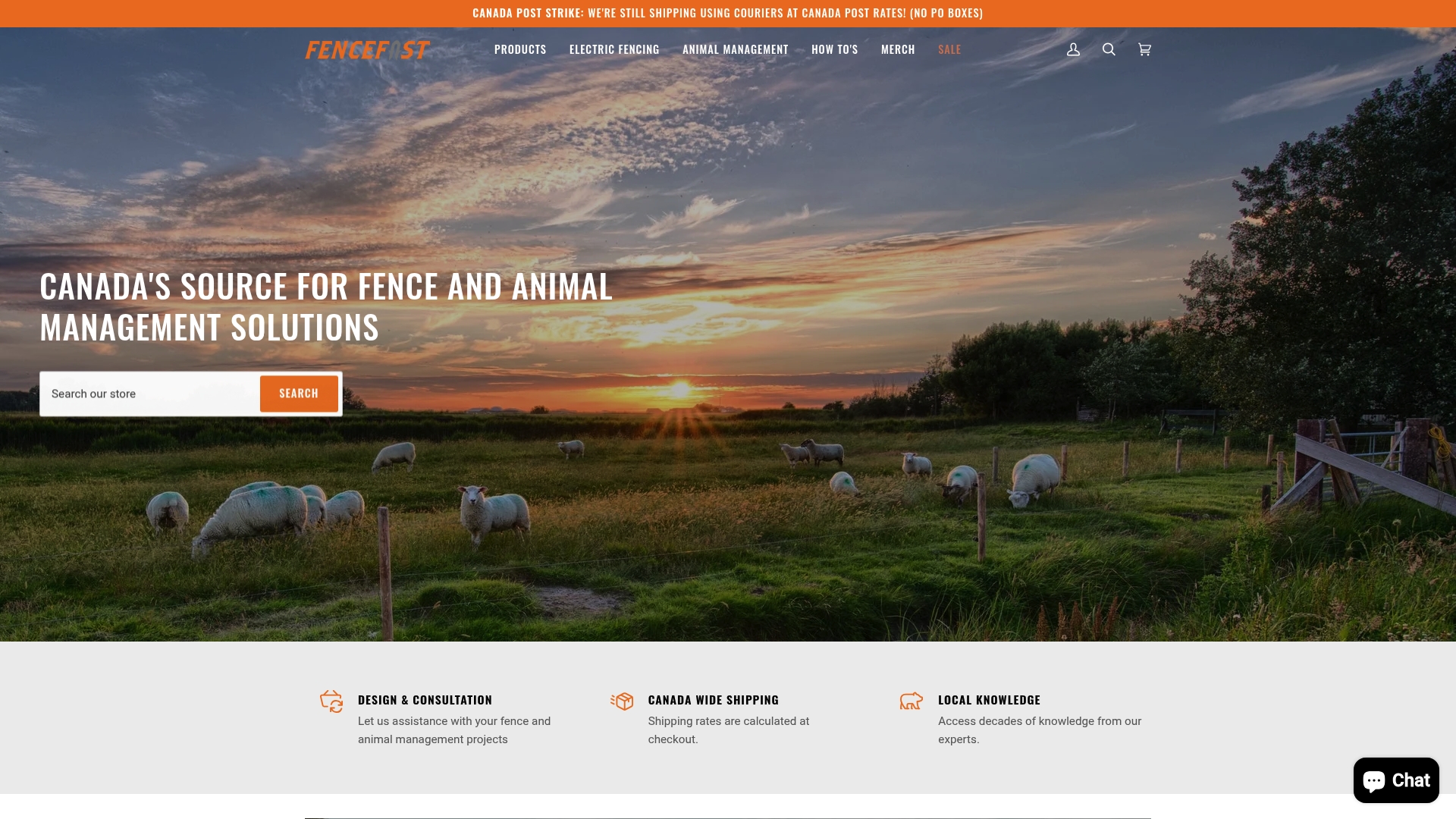Livestock diseases can hit a farm like a storm and disrupt everything in their path. Some of these illnesses can cause entire herds to lose up to 40 percent of their productivity and lead to devastating financial losses. You might expect the biggest threat to be the rare and dramatic outbreaks, but everyday infections like mastitis and brucellosis quietly cost farmers far more each year. The real danger is often the disease you ignore.

Table of Contents
- What Are Common Livestock Diseases?
- How Common Livestock Diseases Affect Animal Health
- Key Concepts In Livestock Disease Prevention
- Real-World Impact Of Livestock Diseases On Agriculture
Quick Summary
| Takeaway | Explanation |
|---|---|
| Understand common livestock diseases | Recognizing diseases like anthrax and avian influenza is crucial for effective management. |
| Implement robust biosecurity measures | Strict hygiene protocols help prevent disease transmission among livestock and protect investments. |
| Prioritize preventive healthcare strategies | Regular health screenings, vaccinations, and optimal nutrition can reduce disease prevalence and improve animal welfare. |
| Monitor economic impacts of diseases | Be aware that outbreaks can lead to significant financial losses and disrupt market access. |
| Educate yourself on zoonotic diseases | Understanding diseases that affect both animals and humans is essential for public health and agricultural stability. |
What are Common Livestock Diseases?
Livestock diseases represent significant challenges for farmers, potentially causing substantial economic losses and threatening animal health. These medical conditions can spread rapidly through herds, impacting overall agricultural productivity and requiring strategic management approaches.
Types of Livestock Diseases
Livestock diseases can be categorized into several critical groups that impact different animal systems and transmission mechanisms. Understanding these categories helps farmers develop targeted prevention and treatment strategies.
To help clarify the main types of livestock diseases and their key characteristics, the following table categorizes them and provides representative examples with their primary impact.
| Disease Category | Examples | Main Impact |
|---|---|---|
| Bacterial Diseases | Anthrax, Brucellosis, Mastitis | Systemic or localized infections, reduced productivity |
| Viral Diseases | Foot and Mouth Disease, Bovine Viral Diarrhea, Avian Influenza | Rapid herd transmission, severe productivity loss |
| Zoonotic Diseases | Brucellosis, Avian Influenza | Threats to both animal and human health |

Bacterial Diseases
Bacterial infections represent a major category of common livestock diseases. These conditions occur when harmful bacteria invade an animal’s body, causing systemic or localized health problems. Examples include anthrax, brucellosis, and mastitis, which can severely compromise animal health and productivity.
Viral Diseases
Viral diseases spread through direct contact, contaminated surfaces, or airborne transmission. These infections can quickly move through entire herds, causing rapid and widespread health challenges. Foot and mouth disease, bovine viral diarrhea, and avian influenza are prominent examples of viral conditions that can devastate livestock populations.
Economic and Health Implications
Common livestock diseases create multifaceted challenges for agricultural operations. According to World Organisation for Animal Health, these diseases can result in significant economic losses through reduced animal productivity, increased veterinary treatment costs, and potential herd decimation.
The following table summarizes key economic and animal health impacts of livestock diseases as outlined in the article, helping you compare their main consequences at a glance.
| Impact Area | Examples Mentioned in Article |
|---|---|
| Reduced Productivity | Lower meat and milk production, reduced weight gain |
| Increased Treatment Costs | Higher veterinary and medication expenses |
| Livestock Mortality | Potential loss of animals, herd decimation |
| Market Value Loss | Decreased value and marketability of infected animals |
| Broader Public Health Risk | Zoonotic disease transmission to humans |
Key economic impacts include:
- Reduced meat and milk production
- Higher veterinary treatment expenses
- Potential livestock mortality
- Decreased market value of affected animals
Successful livestock disease management requires comprehensive understanding, proactive prevention strategies, and rapid response protocols. Farmers must continuously educate themselves about potential health risks and maintain robust biosecurity measures to protect their agricultural investments.
Why Understanding Livestock Diseases Matters
Understanding livestock diseases is crucial for maintaining agricultural productivity, protecting animal welfare, and ensuring food security. Farmers who comprehensively grasp disease mechanisms can develop proactive strategies that minimize economic losses and maintain healthy livestock populations.
Economic and Production Impact
Livestock diseases pose substantial financial risks to agricultural operations. According to USDA’s Animal and Plant Health Inspection Service, these health challenges directly influence farm profitability through reduced production, increased veterinary expenses, and potential market restrictions.
Direct Financial Consequences
The economic implications of livestock diseases extend far beyond immediate treatment costs. Infected animals experience decreased productivity, reduced weight gain, lower milk production, and potentially complete loss of market value. Farmers must recognize these potential financial disruptions and implement comprehensive disease management strategies.
Animal Welfare and Health Considerations
Beyond economic factors, understanding livestock diseases represents a critical component of responsible animal husbandry. Comprehensive disease knowledge enables farmers to:
- Recognize early disease symptoms
- Implement preventive healthcare protocols
- Minimize animal suffering
- Maintain overall herd health
Preventive Healthcare Approach
Proactive disease management involves more than reactive treatment. It requires a holistic approach that integrates nutrition, biosecurity, vaccination programs, and regular health monitoring. Farmers who prioritize preventive strategies can significantly reduce disease transmission risks and maintain healthier livestock populations.
Broader Agricultural and Public Health Implications
Livestock disease management extends beyond individual farm boundaries. Zoonotic diseases that can transfer between animals and humans underscore the importance of comprehensive health monitoring. By understanding and controlling livestock diseases, farmers contribute to broader public health protection and agricultural system stability.
How Common Livestock Diseases Affect Animal Health
Livestock diseases represent complex health challenges that can profoundly impact animal physiological systems, overall wellness, and agricultural productivity. Understanding the comprehensive effects of these diseases provides crucial insights into maintaining robust animal health and preventing widespread agricultural disruptions.
Physiological System Impacts
Common livestock diseases attack multiple biological systems, creating cascading health complications that compromise animal vitality. According to Food and Agriculture Organization, these diseases can significantly reduce an animal’s ability to maintain normal metabolic functions, growth, and reproductive capabilities.
Systemic Health Disruptions
Diseases infiltrate different bodily systems, creating comprehensive health challenges. Respiratory infections compromise lung function, digestive diseases interrupt nutrient absorption, and metabolic disorders can completely destabilize an animal’s internal balance. These disruptions manifest through symptoms like reduced weight gain, decreased milk production, and diminished overall performance.
Performance and Productivity Reduction
Livestock diseases directly correlate with decreased agricultural productivity. Infected animals experience significant performance limitations that extend beyond immediate health concerns:
- Reduced weight gain and muscle development
- Lower milk and protein production
- Decreased reproductive efficiency
- Increased susceptibility to secondary infections
Long Term Health Consequences
Chronic disease exposure can create permanent physiological damage. Animals experiencing repeated or prolonged health challenges may develop compromised immune systems, reduced genetic potential, and permanent performance limitations. This underscores the critical importance of proactive disease prevention and management strategies.

Immune System and Recovery Mechanisms
Livestock health is fundamentally interconnected with immune system resilience. When diseases challenge an animal’s natural defense mechanisms, the recovery process becomes complex and energy intensive. Younger, older, or already stressed animals face heightened risks of severe health complications, making comprehensive disease understanding essential for maintaining herd wellness.
Key Concepts in Livestock Disease Prevention
Livestock disease prevention represents a strategic and comprehensive approach to maintaining animal health, agricultural productivity, and economic sustainability. By understanding and implementing robust prevention strategies, farmers can significantly reduce the risk of disease transmission and protect their livestock investments.
Biosecurity Fundamentals
Biosecurity forms the cornerstone of effective livestock disease prevention. According to the University of Maine Cooperative Extension, comprehensive biosecurity involves a multifaceted approach to protecting livestock from potential health threats.
Core Biosecurity Principles
Successful biosecurity implementation requires careful management of farm access, animal interactions, and environmental conditions. This includes controlling visitor movement, maintaining strict sanitation protocols, and creating physical barriers that minimize disease introduction and spread.
Strategic Prevention Approaches
Effective livestock disease prevention encompasses several critical strategic elements that work together to create a comprehensive protective framework:
- Implementing rigorous vaccination programs
- Maintaining strict quarantine procedures for new animals
- Conducting regular health screenings and monitoring
- Ensuring optimal nutrition and animal living conditions
- Managing pest and vector control
Proactive Health Management
Preventive health strategies go beyond reactive treatments. They involve continuous assessment of herd health, understanding potential disease risks, and developing tailored management protocols that address specific environmental and genetic factors unique to each livestock operation.
Integrated Health Monitoring Systems
Modern livestock disease prevention relies on integrated monitoring systems that combine veterinary expertise, technological tracking, and data driven decision making. Farmers must develop comprehensive record keeping systems that track animal health history, vaccination records, and potential exposure risks. This approach enables early disease detection, rapid intervention, and continuous improvement of overall herd health management strategies.
Real-World Impact of Livestock Diseases on Agriculture
Livestock diseases represent far more than isolated health challenges. They are complex systemic risks that can dramatically transform agricultural landscapes, disrupt food production, and create substantial economic consequences for entire agricultural communities.
Economic Disruption and Financial Losses
The financial ramifications of livestock diseases extend well beyond immediate treatment costs. According to Congressional Research Documentation, potential disease outbreaks can generate catastrophic economic impacts across multiple agricultural sectors.
Comprehensive Economic Consequences
Diseases can trigger massive economic disruptions through multiple interconnected mechanisms:
- Complete livestock population losses
- Reduced meat and dairy production capacities
- Increased veterinary and treatment expenditures
- International trade restrictions and market access limitations
- Long term genetic line disruptions
Agricultural Supply Chain Vulnerabilities
Livestock diseases expose critical vulnerabilities within agricultural supply chains. A single disease outbreak can create cascading effects that compromise food security, destabilize regional agricultural economies, and generate complex logistical challenges for farmers, processors, and distributors.
Systemic Ripple Effects
When livestock diseases spread, they generate complex systemic consequences that extend far beyond individual farm boundaries. These impacts include reduced agricultural productivity, increased consumer food prices, potential market restructuring, and significant stress on agricultural infrastructure.
Global Food Security Implications
Livestock diseases represent substantial threats to global food production systems. They challenge agricultural resilience by disrupting protein production, creating unexpected market volatilities, and potentially compromising nutritional sustainability for large population segments. The interconnected nature of modern agricultural systems means that localized disease outbreaks can rapidly transform into broader regional or even international challenges, underscoring the critical importance of proactive disease management and prevention strategies.
Protect Your Livestock and Safeguard Your Investment
Worried about the economic losses and health threats caused by common livestock diseases? The article highlighted real concerns like reduced productivity, expensive treatments, and the challenge of maintaining herd health. At FenceFast.ca, we recognize how crucial it is to keep your livestock secure and healthy by preventing disease entry and spread. Our range of animal management supplies and fencing solutions are crafted to give you the control and biosecurity your farm needs.

Take charge of your herd’s health and ensure a productive farming year. Shop the latest fencing systems, monitoring equipment, and animal health supplies designed for Canadian agriculture at FenceFast.ca. Act now to reduce risks, avoid unnecessary losses, and build a safer environment for your animals and your business.
Frequently Asked Questions
What are the common types of livestock diseases?
Common types of livestock diseases include bacterial diseases such as anthrax and mastitis, viral diseases like foot and mouth disease and avian influenza, and zoonotic diseases that can transfer between animals and humans.
How do livestock diseases impact farm productivity?
Livestock diseases can reduce meat and milk production, increase veterinary treatment costs, and potentially lead to livestock mortality, all of which adversely affect farm profitability and productivity.
What are effective strategies for preventing livestock diseases?
Effective prevention strategies include implementing rigorous vaccination programs, maintaining strict biosecurity measures, conducting regular health screenings, and providing optimal nutrition and living conditions for the animals.
How can farmers recognize early signs of livestock diseases?
Farmers can recognize early signs of livestock diseases by observing changes in animal behavior, appetite, weight loss, reduced production (e.g., milk or weight gain), and any unusual symptoms such as coughing or lethargy.
Recommended
-
[
Gallagher Garden & Backyard Protection Kit – FenceFast Ltd.
-
[
Best Fencing for Cattle: Top Choices and Tips for 2025 – FenceFast Ltd.
](https://fencefast.ca/blogs/news/best-fencing-for-cattle-top-choices-2025)
-
[
Predator Proof Chicken Coops: 2025 Guide for Safe Flocks – FenceFast Ltd.
](https://fencefast.ca/blogs/news/predator-proof-chicken-coops-2025-guide)
-
[
LEVELWINDER II BARB WIRE ROLLER/UNROLLER – FenceFast Ltd.
](https://fencefast.ca/products/levelwinder-ii-barb-wire-roller-unroller)
